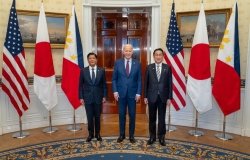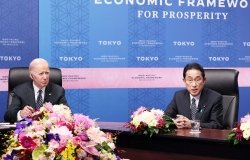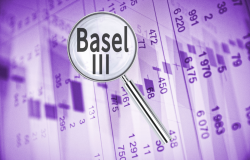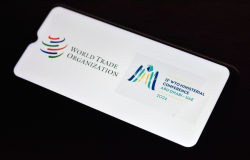How Iran Got What It Wanted From the Nuclear Deal
"In the agreement announced this week, the Obama administration got what it needed. Iran, however, got what it wanted—and secured the better deal," writes Aaron David Miller.
The Iran nuclear deal brings to mind, of all things, the Rolling Stones. The Stones were wrong when they sang that you can’t always get what you want. In the agreement announced this week, the Obama administration got what it needed. Iran, however, got what it wanted—and secured the better deal. Consider:
Narrow U.S. goals: President Barack Obama’s objectives in negotiating with the mullahs were specific and focused. Despite the constraints of a global economic sanctions regime and strategic cyberattacks by the U.S. and Israel, Iran’s nuclear program was accelerating. The Israelis were increasingly alarmed and in 2012 were close to taking military action. A mechanism was needed to slow Iran’s progress not just for the remainder of the Obama administration but beyond. The deal that emerged will reduce and slow Iran’s nuclear program while also making it more transparent. The accord has its flaws—but it looks likely to satisfy President Obama’s needs: preempt an Israeli military strike; make the use of U.S. military force unnecessary; defuse a potential global crisis over the nuclear issue; and set a precedent in nuclear arms control that, should the deal be sustained, will hand the Obama administration at least one signal achievement in a chaotic and disorderly Middle East.
Iran’s broader achievement: But if the U.S. president got what he needed, the mullahs got what they wanted. This is not to suggest that Tehran is led by a bunch of strategic geniuses who conceded nothing. Had sanctions not been so devastatingly effective, the mullahs would have continued to run their “resistance economy” and not accepted constraints on their nuclear program. Unlike U.S. administrations that measure their political life in four- to eight-year increments, Iran’s supreme leader was thinking along much broader lines: how to secure the regime and the 1979 Islamic revolution. Doing that required managing public opinion by getting out from under a sanctions regime, getting Iran’s economy once again open for business, retaining enough of a nuclear infrastructure to preserve weaponization options for the future, and finding sufficient revenue to secure Iranian influence in the region. In short, in exchange for a nuclear weapon it doesn’t possess—and, according to U.S. intelligence estimates, has yet to make a final decision to develop—Iran will get billions of dollars’ worth of sanctions relief, which leads to new legitimacy without giving up future options in the nuclear area.
Little likelihood of cheating: Why would Iran cheat? This agreement gives Iranian leaders a good deal of what they wanted without forcing them to abandon their putative nuclear weapons’ aspirations. For the next six months it is in Iran’s interest to consolidate support for the agreement at home, maintain an image of respectability to the international community, and do everything it can to abide by the deal’s terms. Iran is expected to push–largely by banking on the Russians and Chinese—for the coming U.N. Security Council resolution to meet its requirements. Iran must comply with a separate accord it concluded with the International Atomic Energy Agency on satisfying disclosure of possible military dimensions of its nuclear program and ensuring that the IAEA is in a position to validate by year’s end that Iran has complied with its commitments so that sanctions can be lifted and assets unfrozen. If the nuclear agreement collapses, the mullahs will want to make sure that the fault lies not with them but with Congress.
The regional edge: Remember the Arab Spring? Now think about a Persian one. Iran is rising as the Arab world melts down. And while Iran’s allies are pretty weak on their own, they can be effective compared with even weaker parties. For now, Iran doesn’t have to flex its muscles. Geography and demography give it natural advantages in a Shiite-dominated Iraq; at relatively low-cost support for the Houthi rebels, Iran and its proxies have the Saudis bogged down in Yemen; and in Syria, President Bashar al-Assad is weakening but the opposition is divided and Islamic State also appears to be checked. U.S. government thinking is that once Iran gains access to its $100 billion in frozen oil revenue, it won’t spend the majority on its regional allies. But Tehran doesn’t need to do that: Spending 10% to 20% would maintain its regional influence. Right now, there appears to be little advantage to cooperating in some meaningful detente with Washington to defuse these crisis areas. In fact, such efforts might create problems as the regime tries to sell the accord to its hard-line constituency.
Given its objectives, the Obama administration didn’t negotiate a bad agreement. Iran just got a much better one.
The opinions expressed here are solely those of the author.
This article was originally published in The Wall Street Journal.
About the Author


Middle East Program
The Wilson Center’s Middle East Program serves as a crucial resource for the policymaking community and beyond, providing analyses and research that helps inform US foreign policymaking, stimulates public debate, and expands knowledge about issues in the wider Middle East and North Africa (MENA) region. Read more










